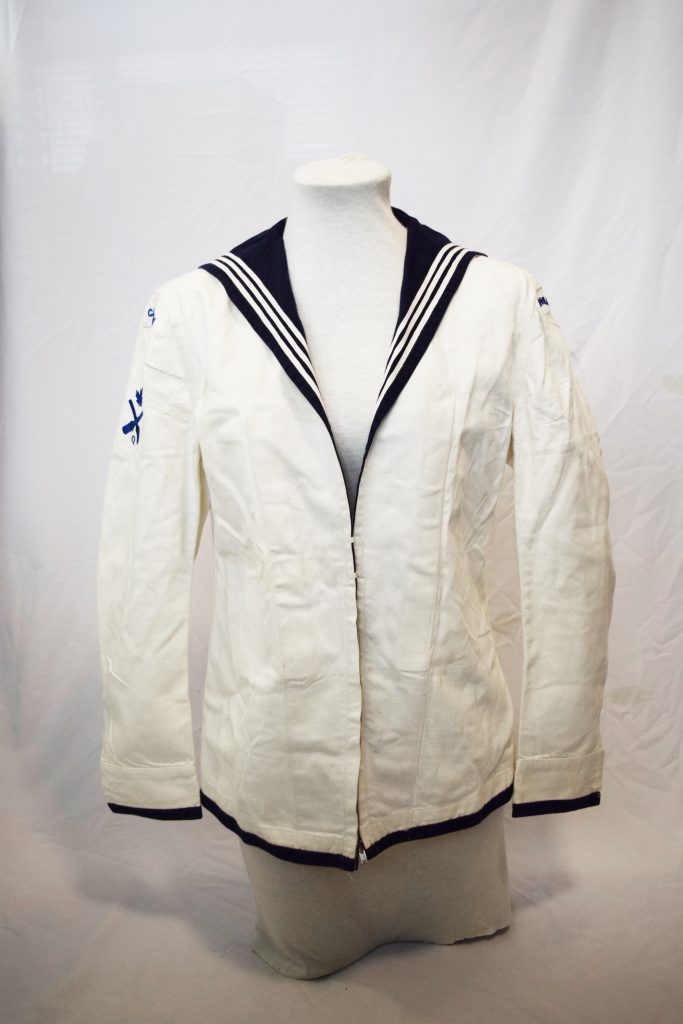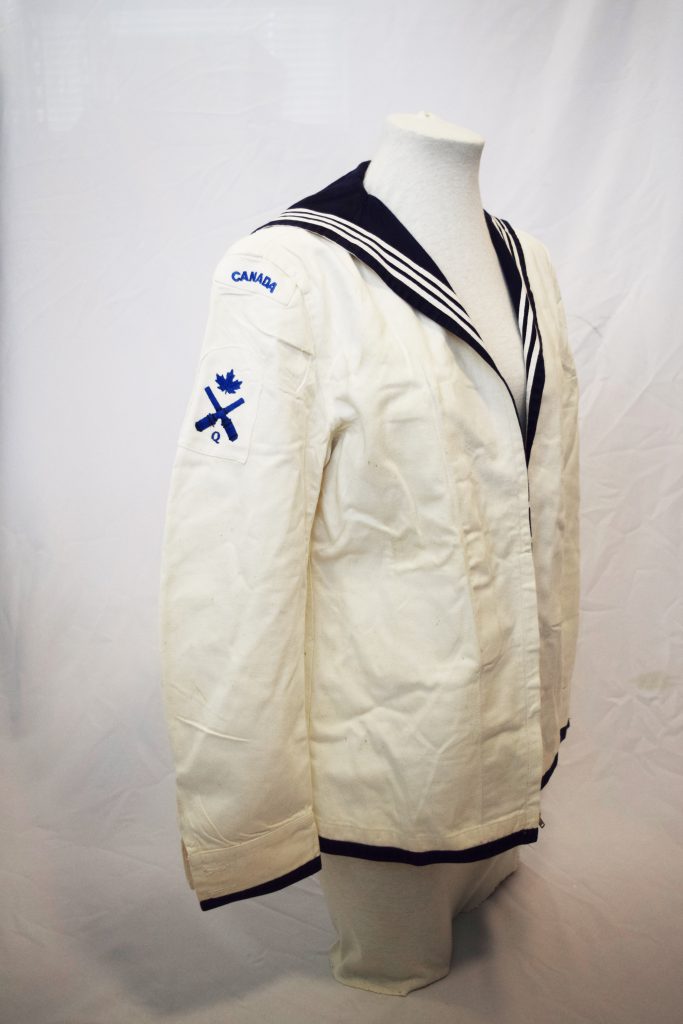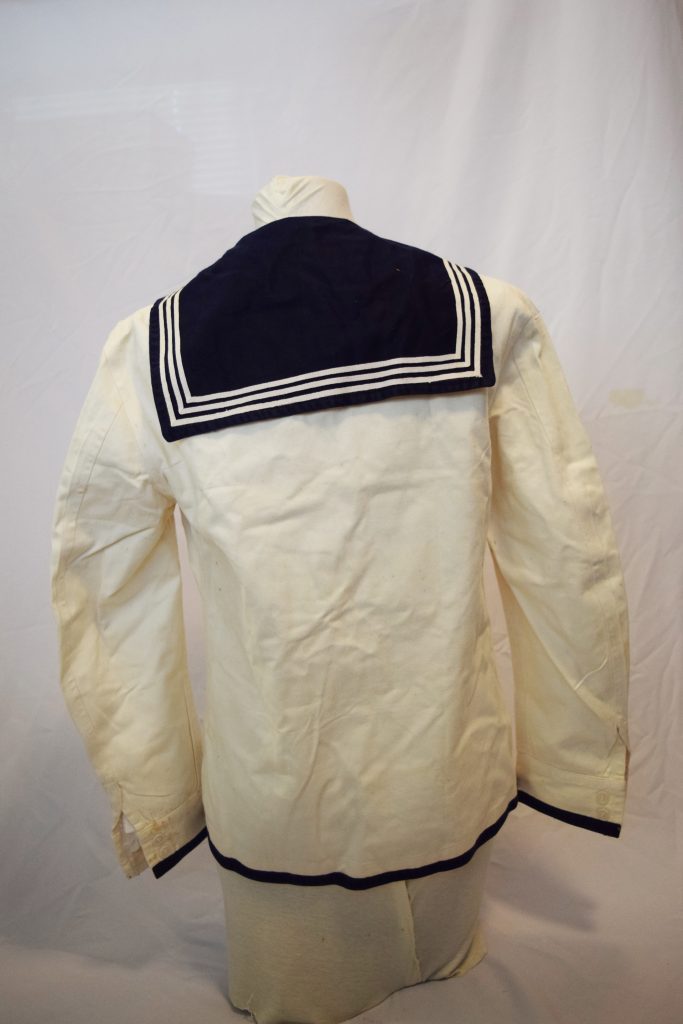These white and blue jackets were worn by sailors of the Royal Canadian Navy during Canada’s involvement in the Korean Civil War. They are adorned with “Canada” and “Maple Leaf” patches along the sleeves. These were used during military service from June 1950 to July 1953. Following the end of the Second World War, Japan receded from the Korean peninsula which lead to the divide of North and South Korea. After diplomatic attempts to unite North and South Korea failed, North Korea attempted to do so by military force. They invaded in June 2nd 1950, starting a civil war. On the 25th of June the United Nations agreed to defend South Korea by military, and so Canada, the United States, Australia, United Kingdom, New Zealand, South Africa, India, the Philippines, Ethiopia, France, and multiple other countries sent troops to Korea under United Nations Representation.
The Royal Canadian Navy sent 8 “Tribal Class” battleships to aide South Korea in 1950. They stayed active and present until 1955 during which time they were responsible for the destruction of 8 of the 28 trains destroyed by United Nations. The Royal Canadian Navy also contributed to the invasion of Inchon which was an attempt to capture the Incheon port from North Korean control and use it as a foothold to retake Seoul. Canadian Tribal class ships did not receive any damage during its involvement in the Korean Civil War.
The “Tribal Class” Royal Ships are a classification of battleships in the Canadian, United Kingdom, and Australian Royal Navies. They are intended to have high firepower and speed in exchange for being less defensively equipped. These ships are all named after individual First Nations depending on the country they are from. For example, the 8 Canadian Royal Navy ships involved in Korea were named the HMCS Chinook, Haida, Athabaskan, Sioux, Cayuga, Nootka, and Iroquois as well as Huron and Crusader. Some of the Australian “Tribal Class” Ships are named Warramunga and Arunta, and some examples of United Kingdoms “Tribal Class” are Maori, Nubian, and Sikh.
This blog was researched and written by Darren Ragoonath, Douglas College


